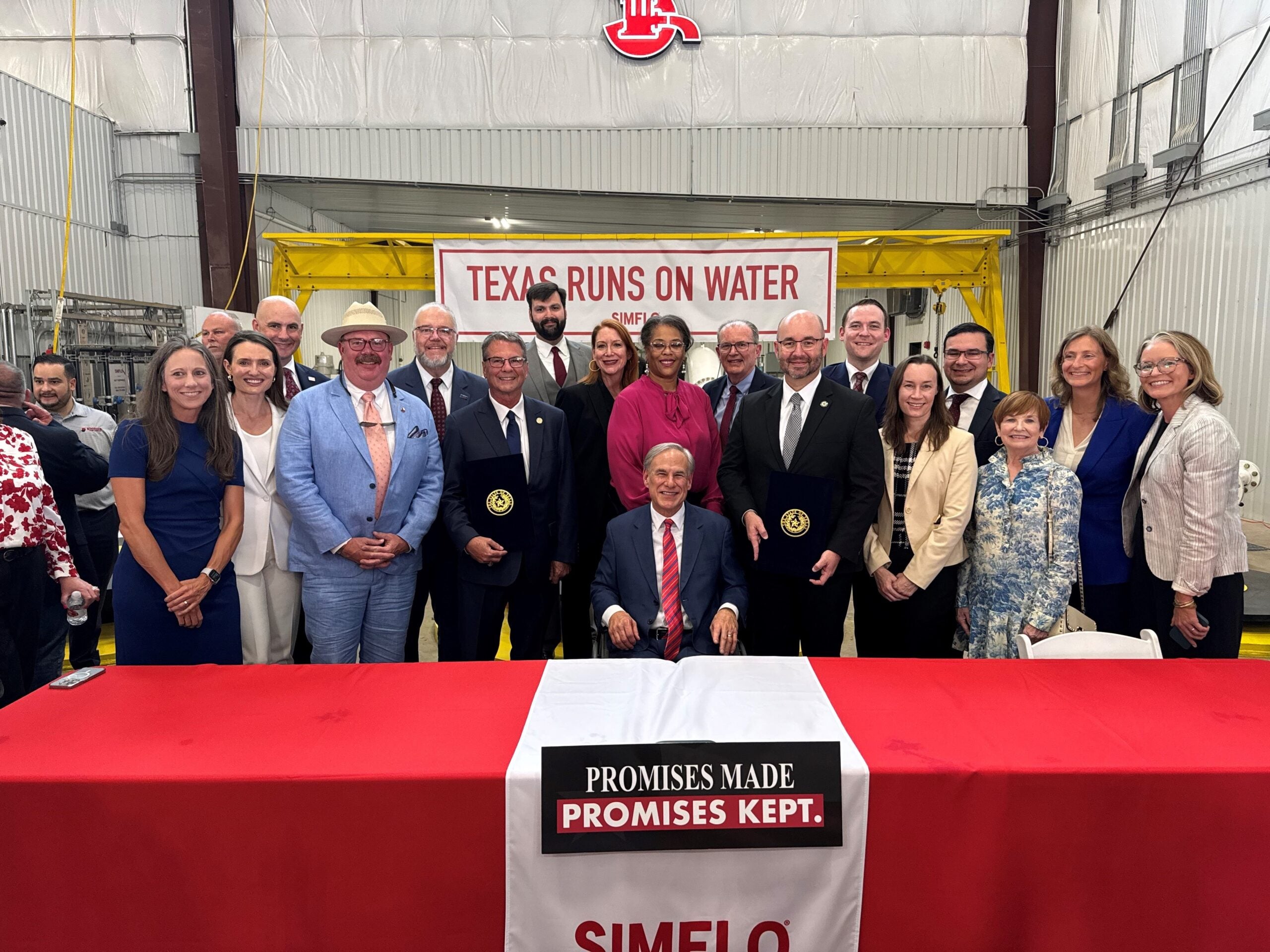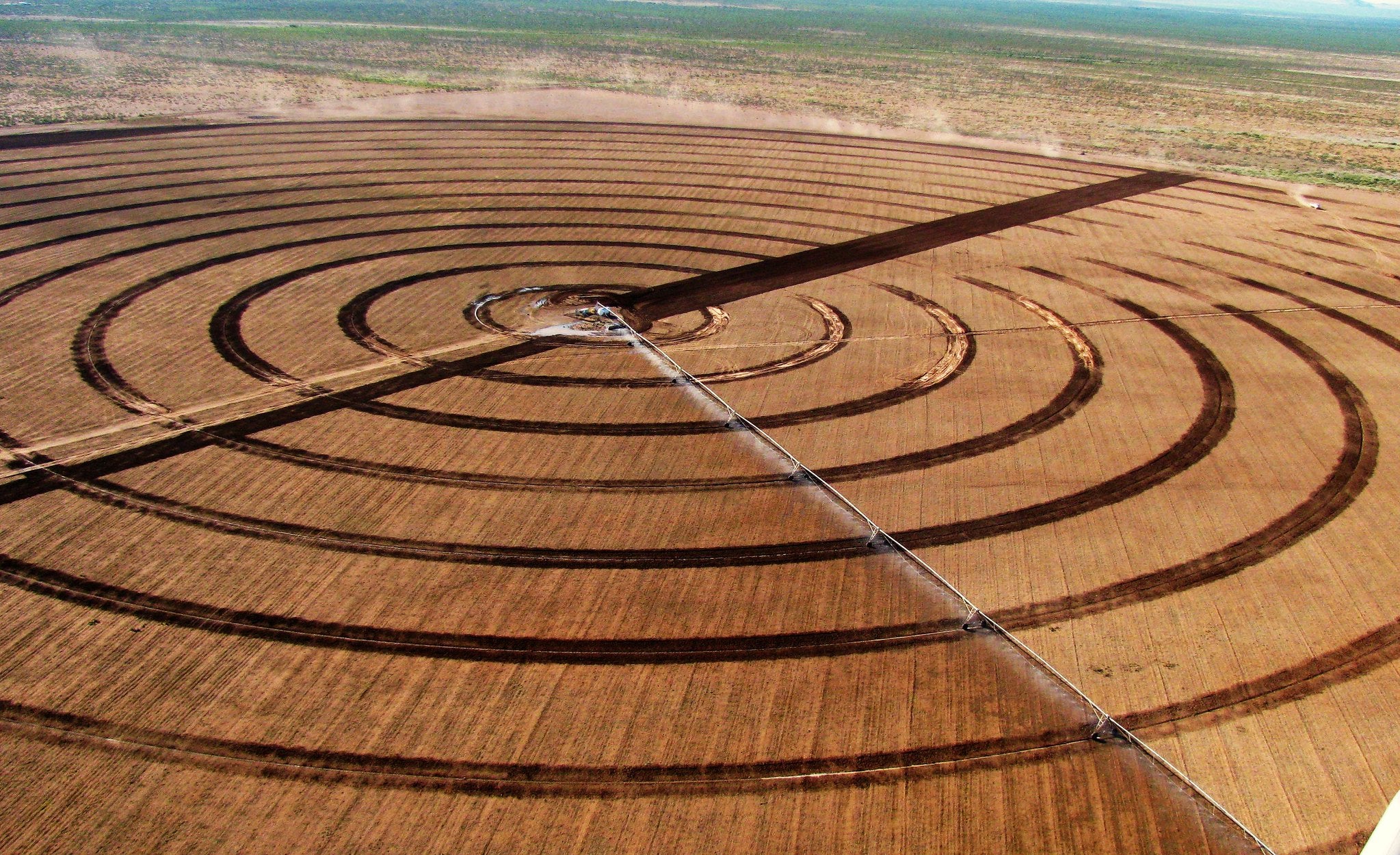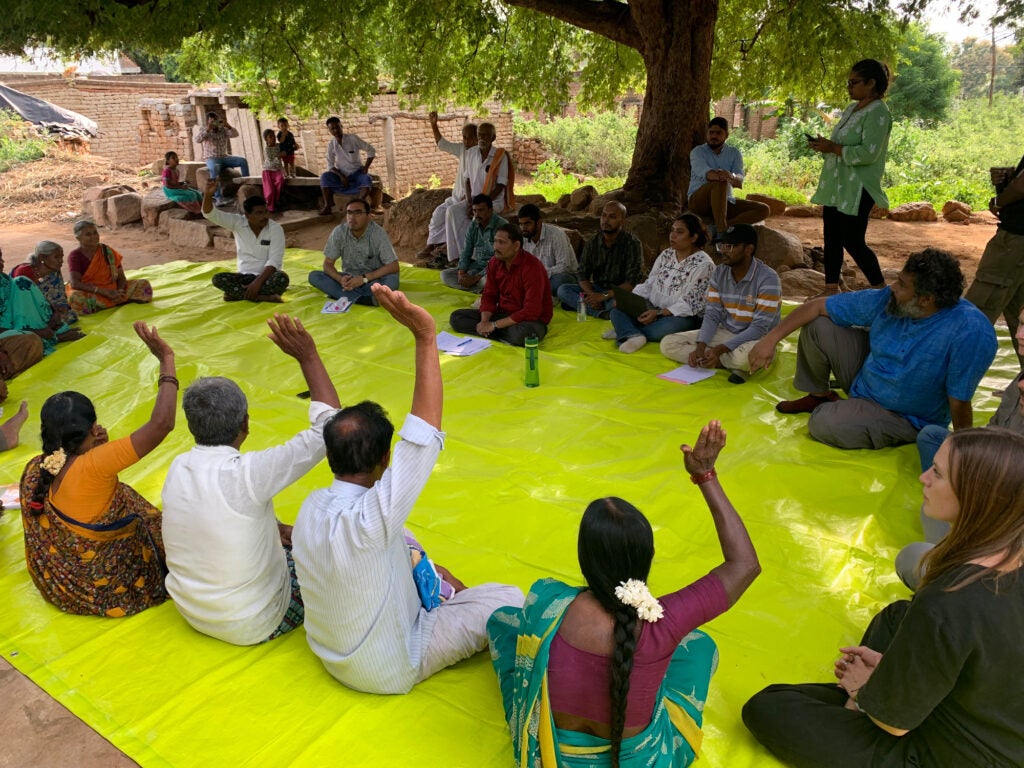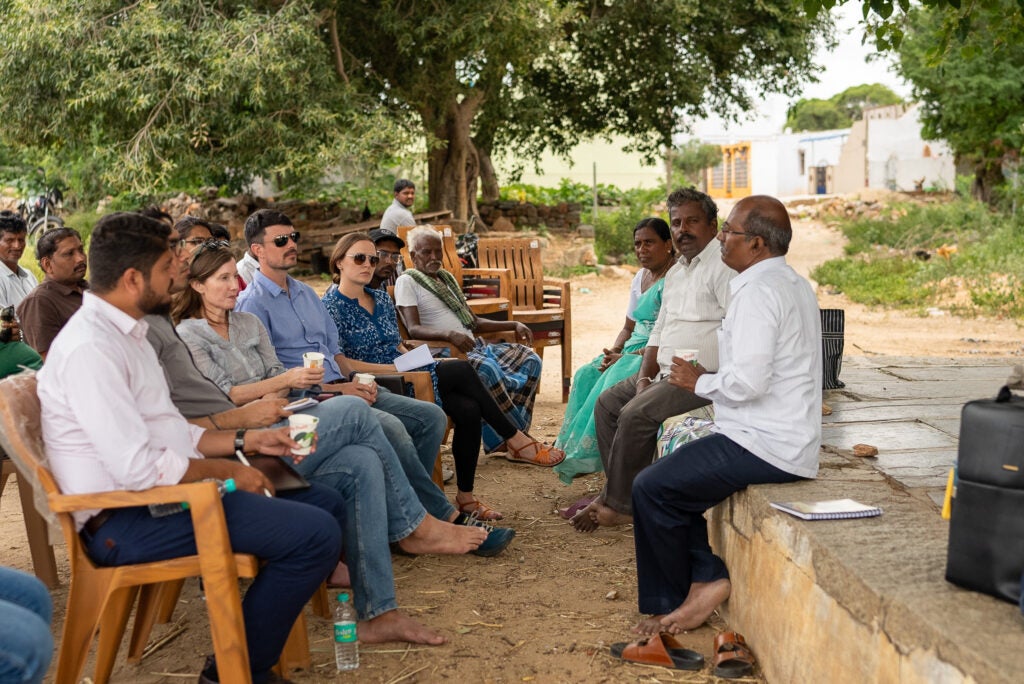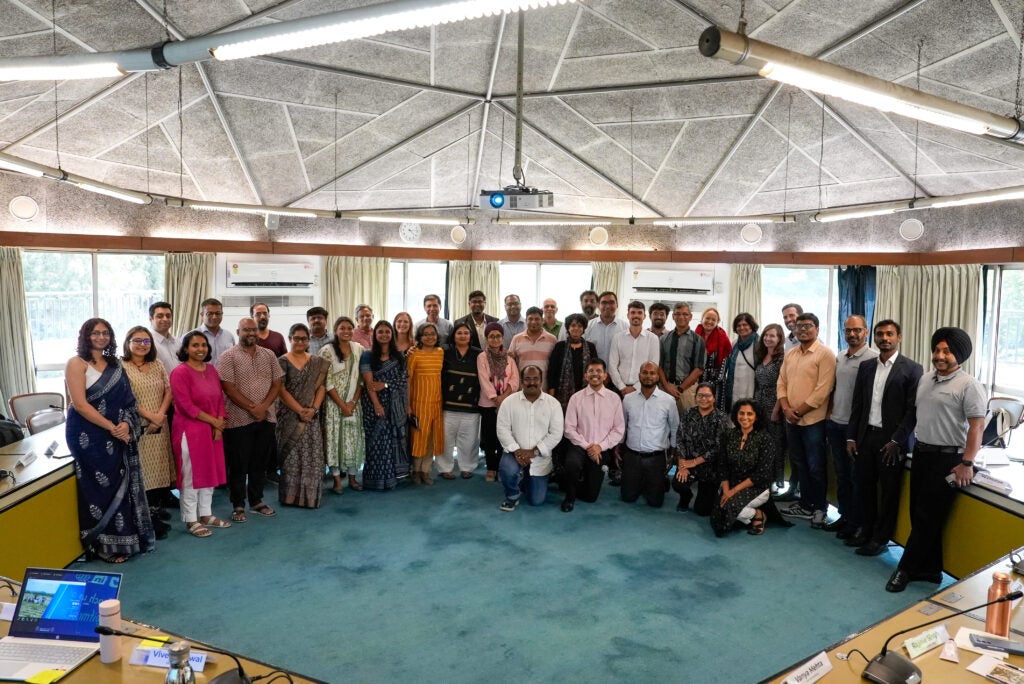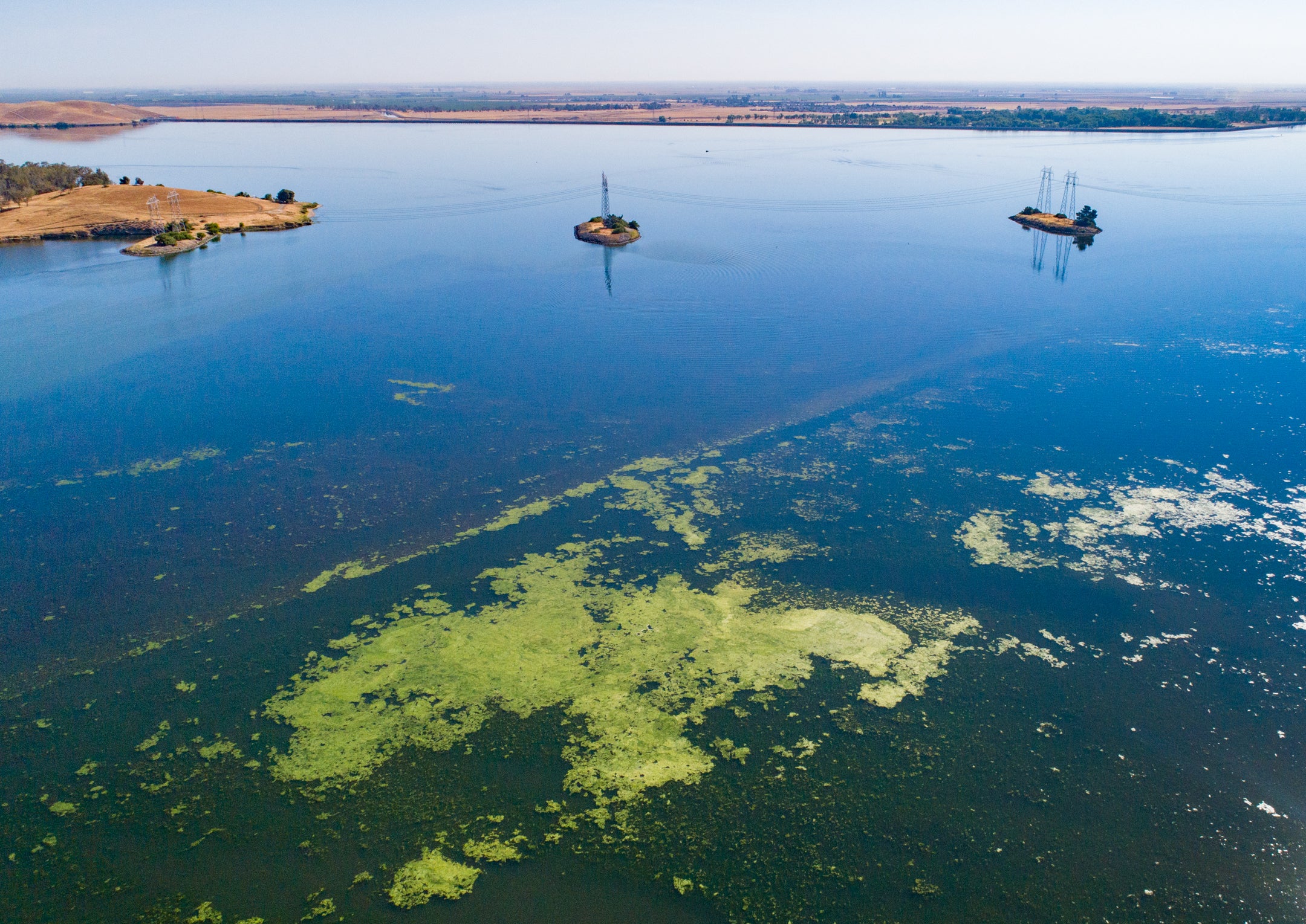
EDF’s Leah Beaulac (bottom right) and Nikhil Goveas (right) listen to a groundwater user group meeting in Kadiri, Andhra Pradesh.
EDF is helping farmers address one of their core climate challenges: securing a reliable water supply. This September, an EDF team led by Ann Hayden, Nikhil Goveas, Gopal Penny and Leah Beaulac conducted a series of comprehensive site visits and workshops across drought-prone areas of central India.
Water availability in India is a core climate issue for the world. India is by far the largest user of groundwater in the world. More than 60% of the country’s irrigated agriculture and 85% of drinking water supplies depend on groundwater. Global food prices and the livelihoods of hundreds of millions of farmers depend on India finding a path to sustainable groundwater use. EDF is committed to building a network of partnerships to help achieve this critical climate goal.

EDF’s work in India spans a number of workstreams including Climate Smart Agriculture (CSA) and Climate Resilient Water Systems (CRWS).
Every year, billions are invested from the public and private sector in water management in India, yet little is known about the effectiveness of various interventions. That’s where EDF and partners are stepping in to evaluate these approaches on the ground and thereby improve investments and overall resilience at scale.
The water team’s trip deepened EDF’s partnerships with in-country organizations and experts doing remarkable work to recharge groundwater, create more resilience to water scarcity and help farmers thrive.

EDF’s Gopal Penny (left) works with WELL Labs’ Lakshmikantha NR and Avinash Pande to inspect groundwater recharge structures in Jalna, Maharashtra. Photo: Ananya Revanna
First up on the visit: treks through many fields muddied by a generous monsoon to inspect field-level groundwater recharge structures in north-central Maharashtra. EDF and WELL Labs — an India-based solutions-focused research startup — have been supporting local partners in evaluating the design and impact of these structures on local groundwater recharge and farmer prosperity in the region. Our new joint report explains more.

EDF staff listen to leaders of a regional non-profit describe the history of a unique groundwater collectivization program whose impact EDF is helping to quantify.
Next, some long discussions and delicious homemade meals with farmers working the beautiful, bouldered landscape of western Andhra Pradesh. EDF and WELL Labs are evaluating the effectiveness of a remarkable groundwater sharing program that has set up water user associations where neighbors share groundwater and agree to forgo drilling new borewells. The negotiations are hard work. Sharing water can be a deeply personal issue. Yet many are buying into the message of working together rather than drilling alone — which could further overdraft the aquifer. The participants and the design of the program are deeply inspiring and serve as a model of community spirit that we need more echoes of in other groundwater-strained regions.

(From L to R) WELL Labs’ Vivek Grewal, EDF’s Nikhil Goveas, Ann Hayden, and Gopal Penny help lead a lively discussion during the national roundtable on India’s water sector that EDF co-hosted in New Delhi.
Finally, the EDF team ended the historic visit by co-hosting an intense, first-ever national roundtable on monitoring, evaluation, and learning in India’s water sector. Leading scholars, non-profit practitioners, funders and business leaders joined us in the leafy confines of New Delhi’s India International Centre for a stimulating day of discussion. EDF is supporting the development of a data-rich toolbox to help inform government, corporate, and non-profit water interventions across India. Check out key takeaways and next steps from the event.

EDF co-hosted, alongside our in-country partner WELL Labs, the first-ever national roundtable on monitoring, evaluation, and learning in India’s water sector. The event featured leading experts from academic, non-profit, and corporate groups.
